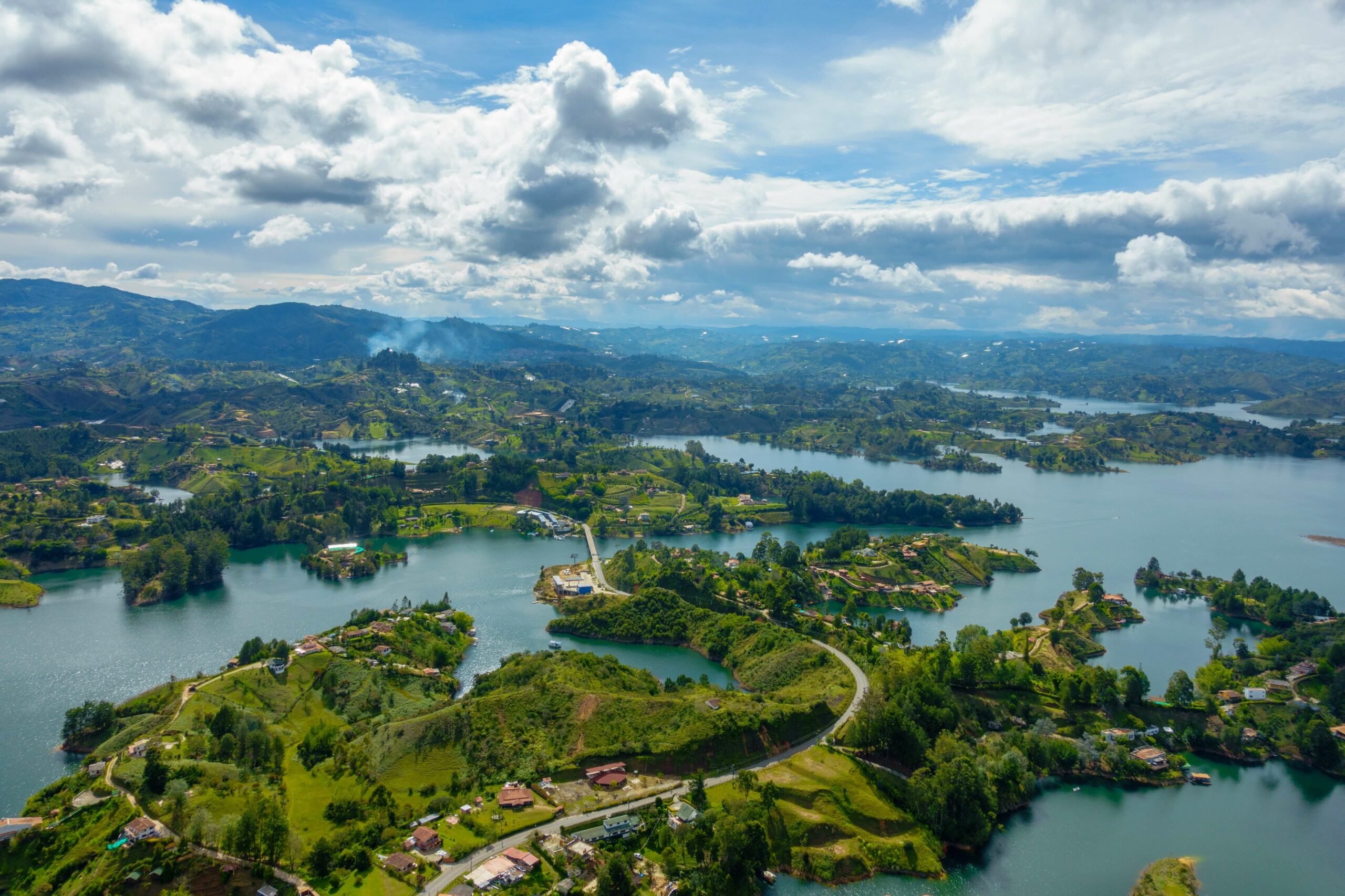Colombia is a South American country with a diverse culture due to the country’s historical population.
For example, the country’s dominant religion, Catholicism, was initially brought to the land by Spanish colonizers and has since become a significant influence on the culture.
Similarly to the country’s culture and demographic makeup, the traditions & rituals of Colombian weddings are heavily influenced by nearby countries such as Brazil and Panama.
This guide will cover thirteen Colombian wedding traditions you should learn about now.
13 Colombian Wedding Traditions and Rituals
Here are thirteen common traditions and rituals you will often find at a Colombian wedding.
1. Colombian Bridal Shower
Before the wedding even begins, the Colombian bridal shower comes with many customs and traditions. The bride-to-be is showered with gifts from all guests, but there is an emphasis on the relationship between the bride and the mother and mother-in-law.
The mother and mother-in-law of the bride will traditionally pass down wedding heirlooms and gifts with special meaning during the bridal shower.
2. Candle Ceremony
The candle ceremony takes place during the wedding ceremony and after the couple exchanges their rings. Each of the partners carries a candle and lights it. The couple will then extinguish their individual candles and take the third candle.
This tradition symbolizes how the couple is now a team by lighting a candle together and disposing of their individual candles. Many couples keep the candle they lit together as a keepsake and a reminder.
The couple leaves the chapel with their lit candle, often dancing while trying to keep the flame lit in their excitement.
3. Belt Contest
One of the silly wedding games that happen during the reception of a Colombian wedding is the belt contest. All of the male guests gather around and take their belts off. The belts are all held up, and the guests examine the length of the belts. The guest with the longest belt is the “winner.”
The contest’s winner typically gets nothing, as the game is meant to show the idea of masculinity as the prize.
4. Godmother and Godfather
Rather than having a bridal party with a best man and maid of honor, Colombian weddings have a godmother and godfather. The couple appoints the godmother and godfather and may choose anyone they want.
Rather than throwing parties, the primary role of the godmother and godfather is as emotional support and to offer guidance for the couple.
Traditionally, a married couple older than the bride and groom is chosen. This choice is because the married couple will give tips and advice they have learned throughout their marriage. Nowadays, it is common for single people to be chosen as godmothers or godfathers because they are close to the bride and groom and will provide proper emotional support.
5. Las Arras (Gold Coins)
Las Arras, the gold coins, is likely the most famous Colombian wedding tradition. The tradition shows the deep ties between Catholocism and practice in Colombian weddings. A priest will bless thirteen gold coins for the couple. The thirteen coins symbolize Jesus and the twelve apostles.
The priest gives the coins to the groom, who then hands the coins to the bride. The groom gives the coins to the bride to show he will always provide for her.
A modern twist on the tradition includes the bride handing the coins back to the groom, symbolizing equality in the relationship and that she will provide for him in the same way.
When the coins are blessed and given to the bride and groom, they are wrapped in a piece of delicate lace. This lace piece is kept by the couple and is meant to be used as the christening hat for the couple’s children.
6. La Hora Loca (The Crazy Hour)
Colombian wedding receptions are known to be wild parties, and much of this comes from the tradition of la hora loca. La hora loca, the crazy hour, begins after midnight. The couple usually chooses a unique theme for this part of the reception, such as Mardi Gras or Brazilian Carnival.
Professionals, such as Carnival dancers, fire dancers, or dancers on stilts, are typically hired to amp up the theme. Live music and a DJ are often combined, as electronic music, and live drumbeats combine.
Colombian wedding receptions are heavily influenced by their neighboring country, Brazil. Brazil is known for its unique Carnival celebrations. La Hora Loca nearly always has some influence from Carnival, no matter the decided theme.
7. Mantilla
A mantilla is a special kind of wedding veil often worn by Spanish, Latin American, and Italian brides. The mantilla is specially designed to circle the face, framing the face beautifully while also providing cover from the sun.
The mantilla veil became popular due to the rule of the Catholic church against uncovered shoulders. The veil is circular, so it rests perfectly on the shoulder to cover them. The veils are generally “cathedral length,” which is floor length and has a dramatic look.
The lace on a mantilla veil is generally intricate and looks like delicate flowers. The edges of the veil are usually a scalloped lace pattern.
8. Bridal Serenade
The bridal serenade, or “Serenata,” is a tradition where the bride-to-be is surprised by her groom, accompanied by a band. The groom will travel to the bride’s house with a band in tow and sing her a song. The couple’s friends and families are usually present, and a party follows the serenade.
This tradition takes place before the wedding and is often considered the first official part of the couple’s wedding after the engagement. Many couples choose to make their first dance at their wedding the same song that the groom chose for the serenade.
9. Guayabera for Men
The guayabera is a specific style and design of men’s shirts. The shirts are characterized primarily by two rows of “alforzas,” which are very fine pleats that give the appearance of a stripe of layered fabric. The shirts also have either two or four patch pockets.
Guayaberas are made of summer-worthy fabric, typically linen or cotton. The shirts are considered the standard men’s formalwear of South America and nearby areas, including Colombia, the Dominican Republic, Mexico, and Cuba. The material is essential, as linen and cotton shirts are breezy and allow the skin to breathe, perfect for warm climates like Colombia.
While the guayabera comes in various colors, white is the standard for formalwear. Pastel colors are also acceptable, though they are less common for guests.
Many men may wear a full guayabera suit that includes matching cotton or linen pants. However, simple khaki pants are often just as standard for guests.
10. Coin in Bride’s Shoe
Placing a coin in the bride’s shoe is a tradition not exclusive to Colombia, as English and German cultures also include this tradition. The meaning of the coin in the shoe varies between cultures, though. For a Colombian wedding, the coin in a bride’s shoe symbolizes the hope for continued financial stability.
By placing a coin in the shoe, the bride puts her wish out that she and her partner are never in a position where they can’t afford life’s necessities.
11. Gather the Day After
The wedding celebration continues the next day when the couple and their guests gather to eat and enjoy each other’s company. The couple will typically prepare Bandeja Paisa, one of the national dishes of Colombia.
Bandeja Paisa consists of chorizo, white rice, ground beef, plantains, arepas (fried corn cakes), avocado, stewed fava beans, pork belly, and a fried egg. The meal is heavy and high in calories, which is why it was initially a worker’s meal, one they would eat at the start of a day before performing heavy labor.
Because the meal is heavy with fried pork, corn, and beef, it’s considered one of the best hangover foods after a long night of partying at the wedding reception.
12. Shoes Under the Dress
The tradition of placing shoes under the bride’s dress is somewhat similar to the bride throwing her bouquet. During the wedding reception, all the single male guests put one of their shoes under the bride’s dress. The bride will close her eyes and select one of the shoes. The shoe’s owner will be the next to marry according to tradition.
This tradition is often carried out in addition to the bride throwing the bouquet, which is still a popular custom.
13. Traditional Food
Colombia is known for its delicious local cuisine, so it’s no surprise that excellent food at the wedding is critical. The wedding food is typically served buffet-style so that guests can load their plates up with all of their favorites.
Some common dishes at a Colombian wedding are Lechona, carne asada, and chorizo sausage. The wedding cake at a Colombian wedding is traditionally a black cake, a fruit cake soaked in wine and rum. The national alcoholic drink of Colombia, Aguardiente, is also always in abundance.
Aguardiente is an anise-flavored drink similar to the taste of black licorice. The alcoholic drink has a distinct sweetness, flavored with pure sugarcane.




